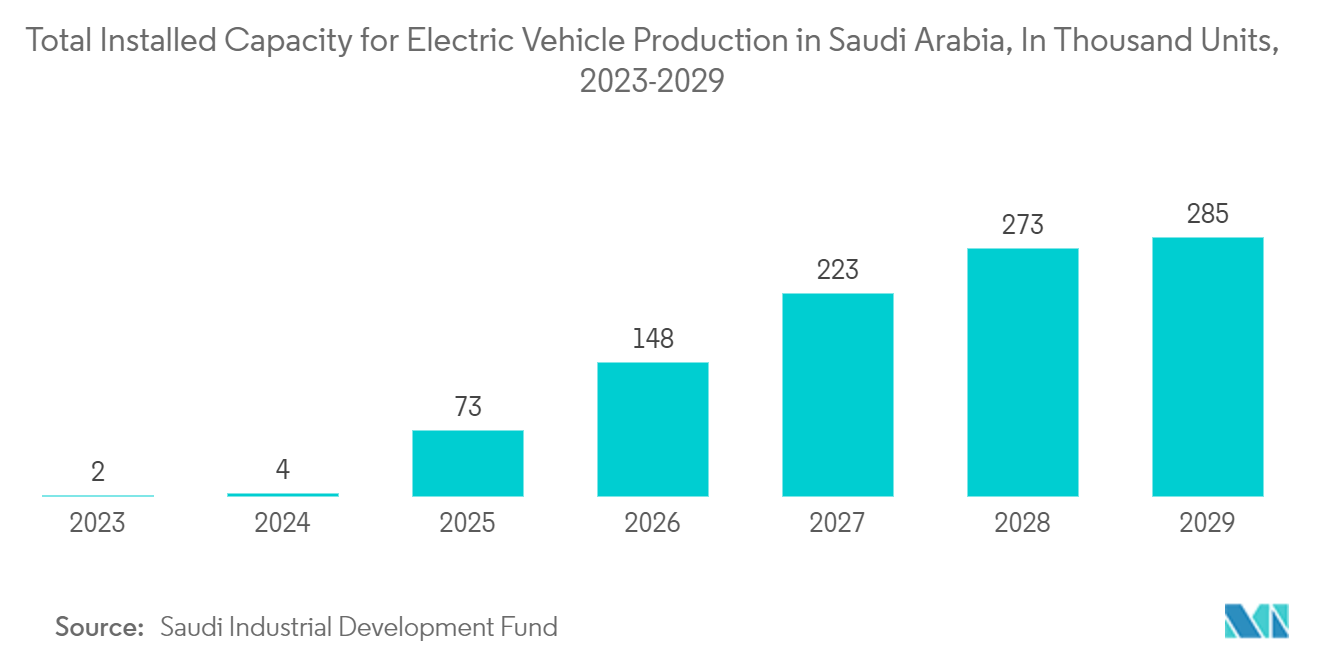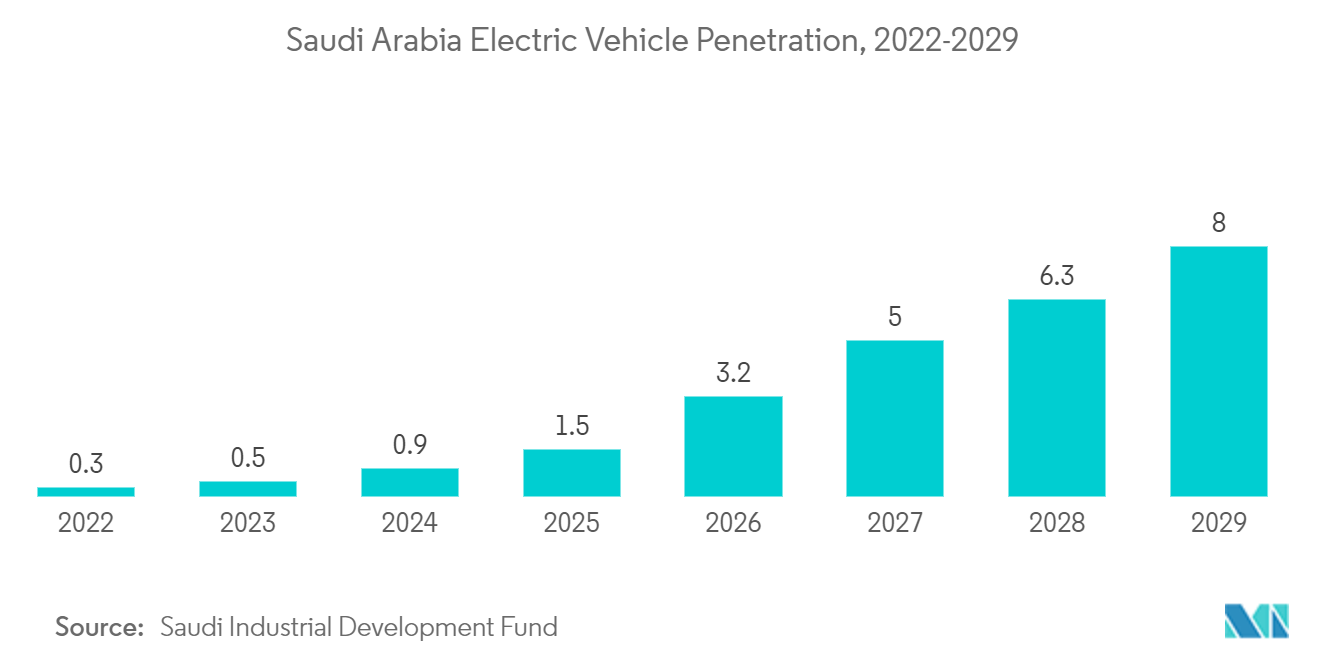Market Trends of Saudi Arabia Electric Vehicle Industry
Passenger Vehicles are Expected to Lead the Market
The electric vehicle (EV) landscape in Saudi Arabia is currently witnessing a significant tilt toward passenger vehicles, with personal transportation needs acting as a major catalyst for this trend. This shift is substantiated by various factors, including consumer preferences, government incentives, and the evolving charging infrastructure. A pivotal factor contributing to the dominance of passenger vehicles in the Saudi Arabian EV market is the substantial demand for personal transportation. The population's preference for convenient and comfortable commuting options has driven the adoption of EVs.
Saudi Arabia has allocated substantial funds to establish competitiveness in the electric vehicle (EV) sector. This strategic financial commitment aligns with the broader vision of Saudi Crown Prince Mohammed bin Salman, aiming to generate employment opportunities and foster economic diversification within the country.
- Noteworthy investments include a minimum of USD 10 billion in Lucid Motors, a US-based company. Additionally, Saudi Arabia has taken steps to establish its own EV entity, Ceer, and has established an electric vehicle metals factory.
The Saudi Arabian government plays a proactive role in steering EV adoption, offering targeted incentives that predominantly benefit passenger vehicles. Exemptions on customs duties and registration fees contribute to reducing the initial costs associated with personal EV ownership. These incentives align with the government's strategy to encourage individual buyers, further strengthening the position of passenger vehicles in the EV market.
While Saudi Arabia's charging infrastructure is expanding, the current focus has been on urban areas and major highways, aligning with the usage patterns of passenger cars. This strategic approach ensures that charging stations are more readily accessible for personal commutes, contributing to the overall convenience of owning an electric passenger vehicle.
Despite the environmental benefits offered by electric commercial vehicles (eCVs), they encounter challenges hindering widespread adoption. Range limitations and higher upfront costs, particularly for heavy-duty trucks, pose obstacles for commercial applications. However, advancements in battery technology and infrastructure developments could enhance the competitiveness of eCVs in the future. Government policies and focused infrastructure expansion might play pivotal roles in accelerating their adoption within the commercial sector.
- In a notable development, the Saudi Arabian Public Transport Authority (PTA) announced plans to introduce electric buses into public transportation networks in 2022, signaling a growing emphasis on eCVs in the public sector.
- Additionally, entities like the Diriyah Gate Development Authority (DGDA) are integrating electric vehicles into operational fleets, showcasing the potential for specific commercial applications.

Battery Electric Vehicles are Expected to Occupy the Majority of the Market
In the burgeoning landscape of Saudi Arabia's electric vehicle (EV) market, battery electric vehicles (BEVs) have emerged as the frontrunners, outpacing plug-in hybrid electric vehicles (PHEVs), hybrid electric vehicles (HEVs), and fuel cell electric vehicles (FCEVs). This leadership role is attributed to various factors, including targeted government incentives and the strategic focus on charging infrastructure development.
The Saudi Arabian government has played a pivotal role in propelling BEVs to the forefront of the EV market. Offering incentives such as exemptions on customs duties and registration fees, the government has distinctly favored BEVs, making them a more financially attractive option for consumers. This deliberate support has significantly contributed to the current dominance of BEVs in the market, as reported by the Saudi Arabian Ministry of Investment.
The concentration of Saudi Arabia's charging infrastructure development in urban areas and along major highways has further solidified the position of BEVs. The alignment of this network with the usage patterns of passenger cars, the predominant segment in the market, ensures that BEV owners have easy access to charging stations, instilling confidence for daily commutes and short trips. In contrast, the limited availability of PHEV options and the exclusion of HEVs from government incentive programs have posed challenges for these segments, while FCEVs face a hurdle in the absence of a comprehensive hydrogen refueling network. Despite the current BEV dominance, potential shifts in the market landscape could occur with advancements in PHEV technology, broader model availability, and potential government incentives. FCEVs might also gain traction if substantial investments are made in developing a hydrogen refueling network, although this remains a long-term prospect.
- Key developments, such as the government's partnership with Hyundai in September 2023 for a BEV manufacturing facility and the introduction of new BEV models by leading car manufacturers, underscore the continued growth and potential market share expansion for BEVs in the evolving Saudi Arabian electric vehicle market.


